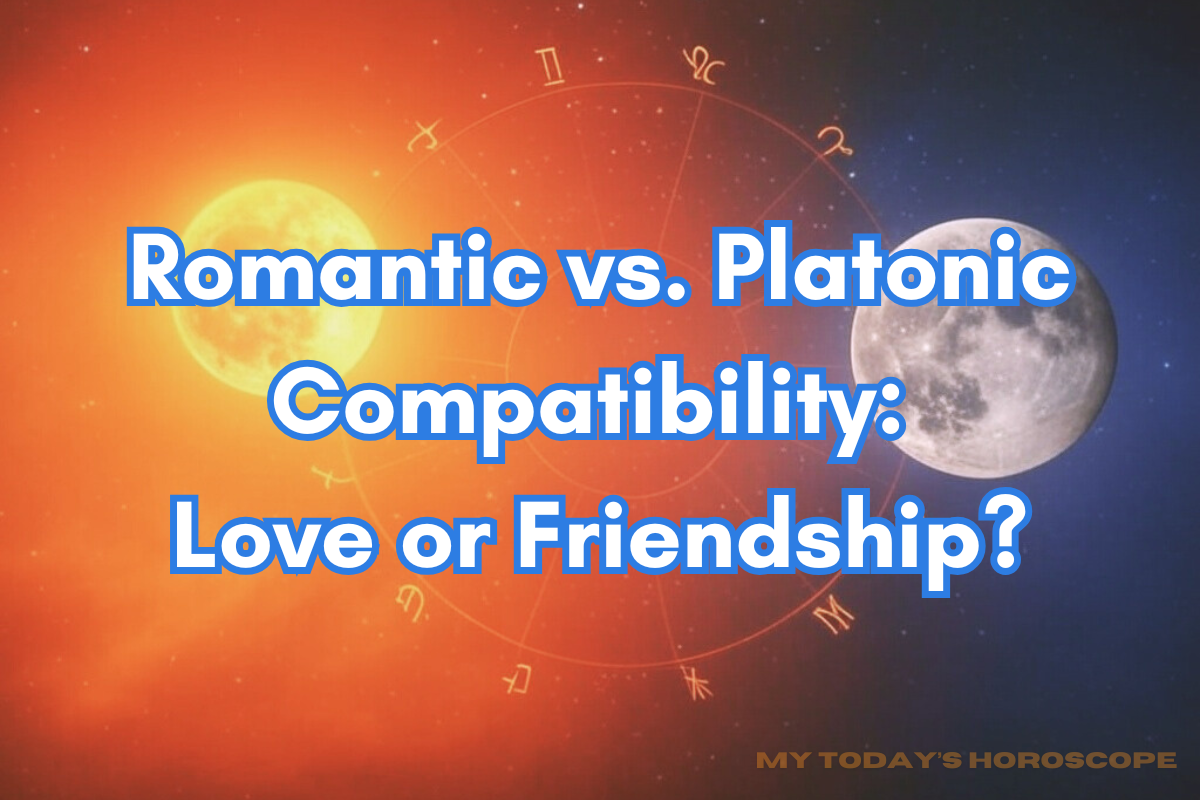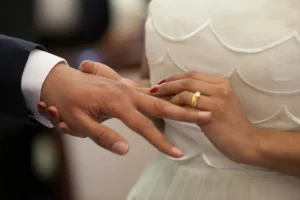Relationships form the cornerstone of human experience, weaving a complex tapestry of emotions, connections, and shared moments. Among the myriad forms these bonds take, romantic and platonic relationships stand out as two of the most significant. But what makes someone compatible with another in a romantic sense versus a platonic one? Is it love that binds us, or is it friendship—or perhaps both? This article delves into the intricate dynamics of romantic and platonic compatibility, exploring their characteristics, similarities, differences, and the factors that influence them. Uncover what drives these relationships, how they evolve, and how individuals can navigate them in a modern world shaped by technology, culture, and self-awareness.
Introduction: Defining Compatibility in Relationships
Compatibility is the invisible thread that ties people together, enabling relationships to flourish. In its simplest form, it refers to the ability of two individuals to coexist harmoniously, sharing values, goals, and emotional resonance. Yet, compatibility takes on different hues depending on the nature of the relationship.
Romantic compatibility often conjures images of passion, intimacy, and a deep, often exclusive, emotional bond. It’s the spark that ignites between lovers, fueled by physical attraction, shared dreams, and a commitment to a future together. Think of it as the foundation of a partnership that balances desire with companionship.
Platonic compatibility, on the other hand, is the bedrock of friendship—a connection rooted in mutual respect, trust, and understanding, free from romantic or sexual undertones. It’s the comfort of a confidant, the laughter shared over inside jokes, and the unspoken loyalty that endures life’s ups and downs.
Understanding the distinction between these two forms of compatibility is more than an academic exercise; it’s a practical tool for navigating our relationships. Whether you’re questioning the blurry line between a close friend and a potential partner or seeking to strengthen an existing bond, this exploration offers insights into what makes love and friendship tick—and how they sometimes intertwine.
The Essence of Romantic Compatibility
Romantic relationships are often celebrated as the pinnacle of human connection, immortalized in poetry, music, and film. But what exactly makes two people romantically compatible? Let’s break it down.
Key Elements of Romantic Compatibility
- Physical Attraction: The initial pull in many romantic relationships often stems from physical chemistry. It’s the flutter of excitement at a partner’s touch or the way their smile lights up a room. While not the sole factor, physical attraction often serves as the spark that ignites deeper exploration.
- Emotional Connection: Beyond the surface, romantic compatibility thrives on emotional intimacy. This is the ability to share vulnerabilities, fears, and joys, creating a safe space where both partners feel seen and understood. As psychologist Dr. John Gottman notes, “The foundation of a strong relationship is emotional attunement—knowing and responding to your partner’s inner world.”
- Shared Values and Goals: For a romantic bond to endure, partners often need alignment on core beliefs—be it family, career ambitions, or moral principles. A couple dreaming of a quiet life in the countryside may struggle if one suddenly craves the hustle of city living.
- Communication and Conflict Resolution: No relationship is without its storms. Romantic compatibility hinges on the ability to communicate openly and resolve disputes constructively. Couples who master this art—listening actively and compromising when needed—tend to weather challenges more effectively.
The Role of Passion and Commitment
Romantic compatibility isn’t static; it evolves with time. Early stages may be dominated by passion—those heady days of infatuation where every moment feels electric. As relationships mature, commitment takes center stage, requiring effort to maintain the connection amidst life’s demands. A couple might start with fireworks but sustain their bond through mutual support during tough times, like raising children or navigating career shifts.
Real-Life Example: The Slow Burn
Consider Sarah and James, who met in college. Their initial attraction was undeniable, but it was their late-night conversations about life goals—both wanting to travel the world and build a creative career—that cemented their bond. Over years, their compatibility deepened as they faced challenges together, from financial struggles to differing opinions on parenting. Their story illustrates how romantic compatibility blends passion with practicality.
The Strength of Platonic Compatibility
If romantic relationships are a flame, platonic ones are a steady hearth—warm, reliable, and enduring. Friendships lack the intensity of romance but offer a unique depth that can rival any love story.
Key Elements of Platonic Compatibility
- Mutual Respect: At the heart of every strong friendship lies respect. It’s the recognition of each other’s individuality, boundaries, and worth, fostering a bond free from judgment.
- Trust: Friends are confidants, keepers of secrets, and pillars of support. Platonic compatibility depends on the trust that what’s shared remains sacred, whether it’s a fleeting rant or a lifelong dream.
- Shared Interests: While not mandatory, common hobbies or passions—like a love for hiking, books, or music—often strengthen platonic bonds. These shared experiences create a reservoir of memories that sustain the friendship.
- Emotional Support: Unlike romantic relationships, platonic ones don’t demand exclusivity, but they thrive on reciprocity. A compatible friend is there to celebrate your wins and lift you during losses, without the complications of romantic expectations.
The Endurance of Friendship
Platonic compatibility often outlasts romantic entanglements because it’s less burdened by societal pressures or physical demands. Friends can drift apart and reconnect years later, picking up where they left off, as if time never passed. This resilience makes platonic bonds a vital part of our social fabric.
Real-Life Example: Lifelong Allies
Take Mia and Elena, friends since childhood. Their compatibility stems from a shared sense of humor and unwavering support. When Mia faced a career setback, Elena was the first to offer a listening ear and practical advice—no strings attached. Their bond, free from romantic complexities, has thrived for decades, proving that platonic compatibility can be a quiet, powerful force.
Comparing Romantic and Platonic Compatibility
While romantic and platonic relationships serve distinct purposes, they share common threads—and notable differences. Let’s explore these parallels and contrasts.
Similarities
- Emotional Intimacy: Both require a level of vulnerability and understanding. Whether it’s baring your soul to a partner or a friend, compatibility hinges on feeling safe to be yourself.
- Effort and Maintenance: Neither type of relationship survives on autopilot. Regular check-ins, shared time, and conflict resolution are essential to keep both thriving.
- Mutual Growth: Compatible relationships—romantic or platonic—encourage personal development. A partner might inspire you to chase a dream, just as a friend might push you to overcome a fear.
Differences
- Physical Dimension: Romantic compatibility often includes a sexual or physical component absent in platonic bonds. This layer adds complexity, as physical intimacy can amplify both connection and conflict.
- Exclusivity: Romantic relationships typically demand a level of exclusivity—monogamy in many cases—while platonic ones embrace a broader network. You can have many close friends, but usually only one romantic partner at a time.
- Purpose and Expectation: Romantic bonds often aim toward a shared future (marriage, family), while platonic ones prioritize companionship without such long-term stakes.
The Blurred Line
Sometimes, the line between romantic and platonic compatibility blurs. A friendship might spark into romance, as with “friends-to-lovers” stories, or a romantic relationship might settle into a platonic companionship after passion fades. This fluidity highlights that compatibility isn’t rigid—it adapts to the individuals involved.
The Influence of External Factors
Compatibility doesn’t exist in a vacuum. Culture, technology, and personal growth shape how we connect with others.
Cultural Norms
Societal expectations often dictate what compatibility looks like. In collectivist cultures, romantic compatibility might prioritize family approval or financial stability over passion. In contrast, individualistic societies might emphasize personal fulfillment. Platonic compatibility, too, varies—some cultures value lifelong friendships, while others see them as secondary to family ties.
The Digital Age
Technology has revolutionized relationships. Online dating apps like Tinder or Bumble prioritize romantic compatibility based on algorithms—swiping right on shared interests or looks. Meanwhile, social media strengthens platonic bonds, keeping friends connected across continents. Yet, this digital shift can complicate compatibility, as virtual interactions sometimes lack the depth of face-to-face connection.
Self-Awareness
Understanding oneself is a prerequisite for compatibility. Knowing your needs—whether for intimacy in romance or reliability in friendship—helps you seek partners or friends who align with them. Journaling, therapy, or simply reflecting on past relationships can sharpen this self-awareness, enhancing your ability to connect meaningfully.
Compatibility in Non-Traditional Relationships
Compatibility isn’t confined to traditional molds. In polyamorous or queer relationships, the principles of emotional connection and shared values still apply, but with unique nuances.
- Polyamory: Here, compatibility extends beyond one partner, requiring communication and consent among all involved. It’s about balancing multiple romantic connections without sacrificing trust.
- Queer Relationships: Societal biases can challenge compatibility, but shared experiences—like navigating identity—often strengthen these bonds, whether romantic or platonic.
These dynamics show that compatibility is flexible, adapting to the individuals and contexts it serves.
The Evolution of Compatibility Over Time
Long-term relationships reveal that compatibility isn’t static. A couple married for decades might find their initial passion replaced by a deep, platonic-like companionship. Friends might grow apart as life stages shift—college buddies drifting after one starts a family. The key to sustaining compatibility lies in adaptability: adjusting expectations, rediscovering shared joys, and embracing change together.
Pitfalls of Overemphasizing Compatibility
Chasing the “perfect” match can backfire. In romance, an obsession with compatibility might lead to rejecting partners over minor flaws, missing the beauty of growth together. In friendships, expecting constant alignment can strain natural ebbs and flows. Relationships thrive not on perfection but on resilience—building something strong despite imperfections.
Practical Advice for Navigating Compatibility
Whether you’re deepening a romance or nurturing a friendship, here are actionable steps:
- Communicate Openly: Share your needs and listen to theirs. Misunderstandings erode compatibility faster than anything else.
- Reflect Regularly: Ask yourself: Does this relationship fulfill me? What can I contribute to it?
- Embrace Differences: Compatibility doesn’t mean sameness. Celebrate what makes you unique—it often strengthens the bond.
- Invest Time: Quality moments—date nights or coffee chats—keep connections alive.
Conclusion: Love, Friendship, or Both?
Romantic and platonic compatibility are two sides of the same coin—distinct yet interconnected. Romantic bonds offer passion and partnership, while platonic ones provide stability and freedom. Both require effort, understanding, and a willingness to grow. As you navigate your own relationships, consider what compatibility means to you. Is it the thrill of love, the comfort of friendship, or a blend of both? Reflect on your connections, communicate your desires, and cherish the bonds that shape your life. After all, compatibility isn’t about finding the perfect person—it’s about building something meaningful together.






